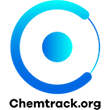ถาม-ตอบ
|
ข้อคิดเห็นจากผู้ทรงคุณวุฒิจะแสดงในกรอบสีเขียว ส่วนข้อคิดเห็นหรือความเห็นจากผู้อื่นจะแสดงในกรอบปกติ
| ข้อคิดเห็นที่
1: Fountain solution is the water-based (or "aqueous") component in the lithographic process that cleans the background area of the plate in order to keep ink from depositing (and thus printing) in the non-image (or "white") areas of the paper. Historically, fountain solutions were acid-based and made of gum arabic, chromates and/or phosphates, and magnesium nitrate. While the acid fountain solution has come a long way in the last several decades, neutral and alkaline fountain solutions have also been developed. Both of these chemistries rely heavily on surfactants/emulsifiers and phosphates and/or silicates to provide adequate cleaning and desensitizing, respectively. Since about 2000, alkaline-based fountain solutions have started becoming less common due to the inherent health hazards of high pH and the objectionable odor of the necessary microbiogical additives. Acid-based fountain solutions are still the most common variety and yield the best quality results by means of superior protection of the printing plate, lower dot gains, and longer plate life. Acids are also the most versatile, capable of running with all types of offset litho inks. However, because these products require more active ingredients to run well than do neutrals and alkalines, they are also the most expensive to produce. That said, neutrals and, to a lesser degree, alkalines are still an industry staple and will continue to be used for most newspapers and many lower-quality inserts. In recent years alternatives have been developed which do not use fountain solutions at all (waterless printing). ( ข้อมูล จาก http://en.wikipedia.org/wiki/Offset_printing Offset Printing ) โดย: นักเคมี [12 ก.พ. 2554 07:47] |
หากท่านต้องการถามคำถามที่ไม่เกี่ยวข้องกับหัวข้อคำถามนี้ กรุณากดปุ่มนี้





